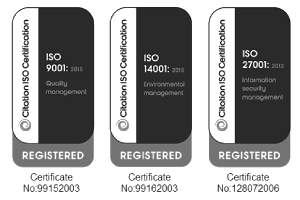Has COVID-19 ended street homelessness?
There have been many articles written on the unexpected and unique opportunity that COVID-19 has presented to bring an end to rough sleeping. Emma Lindley, Housing Strategic Lead at Ashfield District Council, highlights how rough sleeping has changed in Ashfield and other Nottinghamshire authorities as a result of the “Everyone In” initiative during the summer lockdown.
Everyone In (EI) was the Government initiative announced by Dame Louise Casey and the Minister for Rough Sleeping to ensure that everyone could safely shelter from the virus during the lockdown announced at the end of March. The previous Government target announced in 2018 was to end rough sleeping by 2027, which in 2019 was brought forward to 2025, and on 27 March 2020, local authorities were given 48 hours to house everyone on our streets at that time.
Nationally, it is estimated that almost 15,000 individuals have been provided with accommodation as a result of EI. In Ashfield, we provided temporary accommodation to around 20 individuals and secured permanent accommodation for 30. It’s worth noting that the national rough sleeping estimate - which assesses the number of people rough sleeping on a typical night - in 2019 was 4,266 people, and in Ashfield it was 5.
We all know statistics need careful handling and the EI experience has highlighted just how much the reality differs from what the statistics tell us about rough sleeping. For anyone who has relied on this data for their commissioning decisions and tracking their progress in addressing this issue, the important lesson here is that the problem may be 4 or 5 times bigger than you previously thought.
Of course, this only considers the numbers at a moment in time. If we look at how many individuals receive support from crisis and preventative rough sleeping services each year, the number is 40 times higher. In Ashfield, 200 individuals were supported in 2019/20.
So are we seeing the beginning of the end of rough sleeping as a result of EI? For some individuals we are and we should be pleased to see this positive outcome during these difficult times. Nevertheless, some may question if it should have taken a global pandemic to provide this basic human need to these individuals.
However, for those who are at the start of their journey into homelessness, perhaps due to bereavement, financial shock, job loss, relationship breakdown, or any other of those life events that we know can be the trigger of a downwards spiral that results in homelessness, their journey may not look any different. Whilst rough sleeping numbers reduced and then stabilised in Nottinghamshire over the summer, we have seen numbers return to similar levels as this time last year, with around 40% of individuals identified as being new to rough sleeping.
So whilst we may have broken the back of the problem as it looked at the start of lockdown, there are signs that numbers are rising again, and of course we have yet to truly feel the effects of courts reopening, the furlough scheme ending, winter and the peak of the second wave.
To end on a positive note, I’d like to share a case study of an individual who has really benefited from EI. Prior to this, he had been rough sleeping for 6 years and was considered unsuitable for every accommodation option available as he was judged to be “high needs”, “complex needs”, “hard to engage”, “entrenched”.
Through EI, he was provided with a temporary accommodation flat in the area of his preference and throughout his time there has required very little support. Successfully maintaining the tenancy, he is now ready to move on to permanent accommodation. This case has really highlighted to me the importance of providing someone with a home, not just a roof, and how by making the right offer of accommodation, many support needs simply disappear. I would encourage everyone to consider how it might be possible to minimise support needs by getting the housing offer right.
Emma delivered a presentation on this topic at the APSE Housing Seminar - At a crossroads: Building foundations for healthy communities – on 2 October 2020. You can download the presentation here.


.png)



.png)